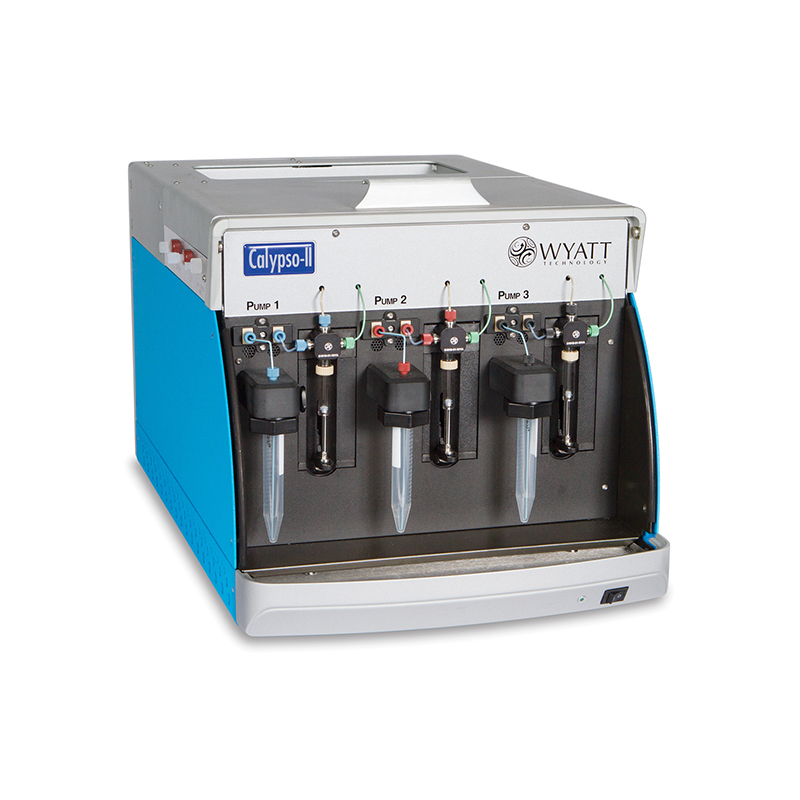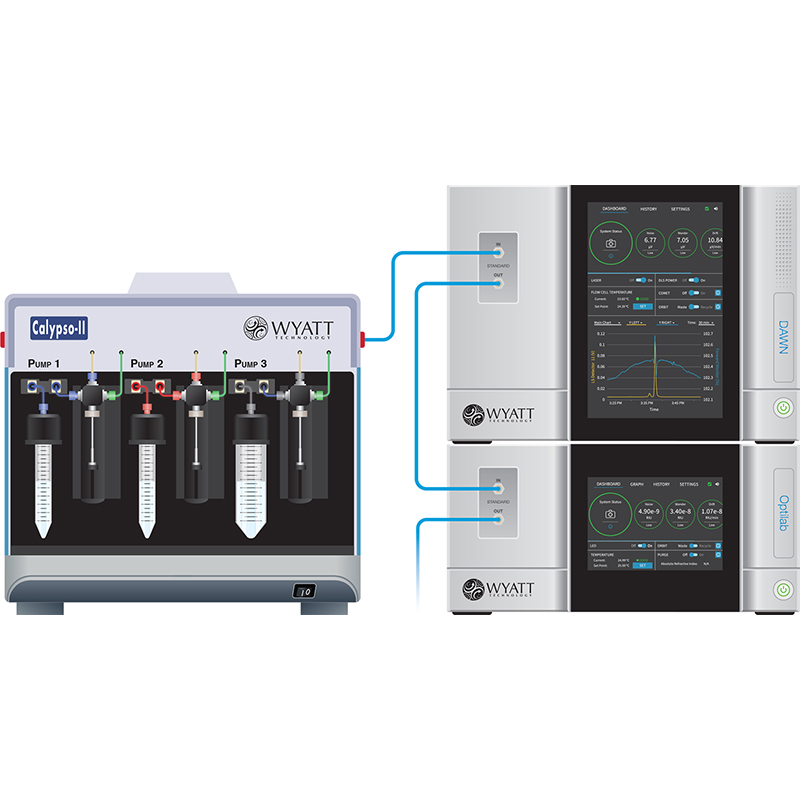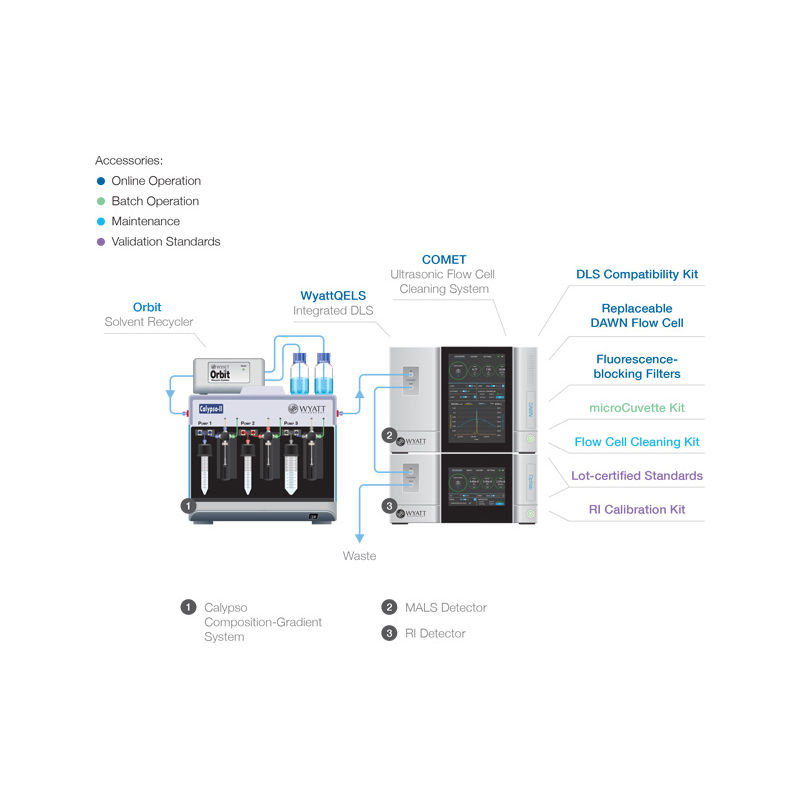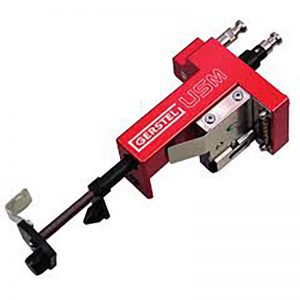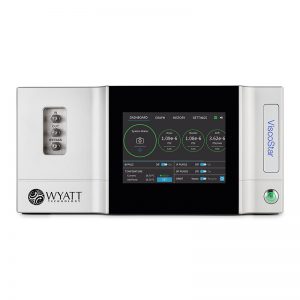Description
Weight-Average Molar Mass
In addition to equilibrium association constants Kd and absolute stoichiometry of reversible self- and hetero-associations, it can also help determine reaction or aggregation rates, non-specific interaction parameters (virial coefficients) and even automate measurements of weight-average molar mass and dn/dc for polymers.
CALYPSO Software
Included with each Calypso is a copy of CALYPSO software, the most versatile software package available for analysis of biomolecular interactions in solution by light scattering.
Creating composition gradients…
CG-MALS employs a Calypso connected to a MALS instrument and optional concentration detector. The Calypso performs sample preparation and delivery, combining up to three different solution in precise mixing ratios and injecting into the detectors.
Accurate compositions result from setting the Calypso’s pumps to appropriate flow rate ratios, all controlled from the CALYPSO™ software through an intuitive GUI. Mixing is achieved by dispensing the solutions simultaneously from all three pumps via a static mixer.
…that work with MALS detectors
Reliable light scattering measurement require the samples to be degassed and filtered. The Calypso incorporates built-in, low-volume degassers and filter housings, connected via PEEK tubing and finger-tight fittings. Even the filter housing is finger-tight, making use of a proprietary design for maximum convenience.
Calypso features
- Biocompatible wetted materials.
- Flexibility to re-organize fluid paths and utilize different wetted materials as needed.
- Convenient loading of sample and diluent solutions via conical tubes: 5, 15 or 50 mL.
- Autoinject Out contact closure signal, to trigger data acquisition by ASTRA® or DYNAMICS® software for data acquisition and analyses not supported by the CALYPSO software (e.g., DLS acquisition).
- Built-in Wash port, allowing the pumps to draw on reservoirs of wash solutions for post-experimental clean-up. Automation of up to two sequential wash solutions, e.g. buffer (to clean out proteins) followed by water (to clean out buffer salts) or detergent followed by water, is possible when an Orbit solvent selector valve is added to the setup. These operations are appended to the Method for unattended operation.
CG-MALS
Composition-Gradient Multi-Angle Light Scattering (CG-MALS) employs a series of unfractionated samples of different composition or concentration in order to characterize a wide range of macromolecular interactions. No special modifications (e.g., sample tagging or immobilization procedures) are necessary: samples are unlabeled and entirely in solution.
Addressing a host of biomolecular phenomena
The primary analysis techniques supported by Calypso hardware and software are:
- Dynamic equilibria: specific binding and complex assemblies of proteins, oligonucleotides and other biomolecules; KD (equilibrium dissociation constant) from picomolars to millimolars; absolute molecular stoichiometry of associating complexes; self and/or heteroassociations
- Non-specific macromolecular interactions: self- and cross-virial coefficients
- Stop flow kinetics: aggregation, dissociation and other time-dependent reactions: equilibration time from seconds to hours
- Zimm plots: concentration gradients for determining solution-average molar mass MW, size Rg, and second virial coefficients
- Refractive index increment: dn/dc
Calypso’s automation enhances productivity while the CALYPSO software provides an unparalleled selection of interaction models. Relative to other techniques for characterizing protein interactions, such as surface plasmon resonance, sedimentation equilibrium, kinetic exclusion or isothermal titration calorimetry – as well as manual CG-MALS measurements – the Calypso provides fast and accurate results.
Applications
Drug Discovery
- Quantify binding affinity and stoichiometry of enzyme/inhibitor or antibody/antigen interactions, including complex multi-valent and multi-protein complex formation
- Study the impact of small molecules on protein-protein interactions
Process Improvement
- Determine second virial coefficient and adjust buffer parameters to improve formulation stability and viscosity
- Determine cross virial coefficients to optimize antibody purification and understand the effects of large excipients on formulations
Self-assembly / Aggregation
- Quantify impact of solvent ionic strength, pH, or excipients on polymerization or protein associations
- Measure kinetics of self-assembly and aggregation via rate of change of molar mass and radius of gyration, and hydrodynamic radius (with a WyattQELS module or NanoStar and parallel analysis in ASTRA or DYNAMICS)
Biotech R&D
- Characterize macromolecular binding affinity and associated complex stoichiometry over a wide range of buffer compositions, time, and temperature scales

